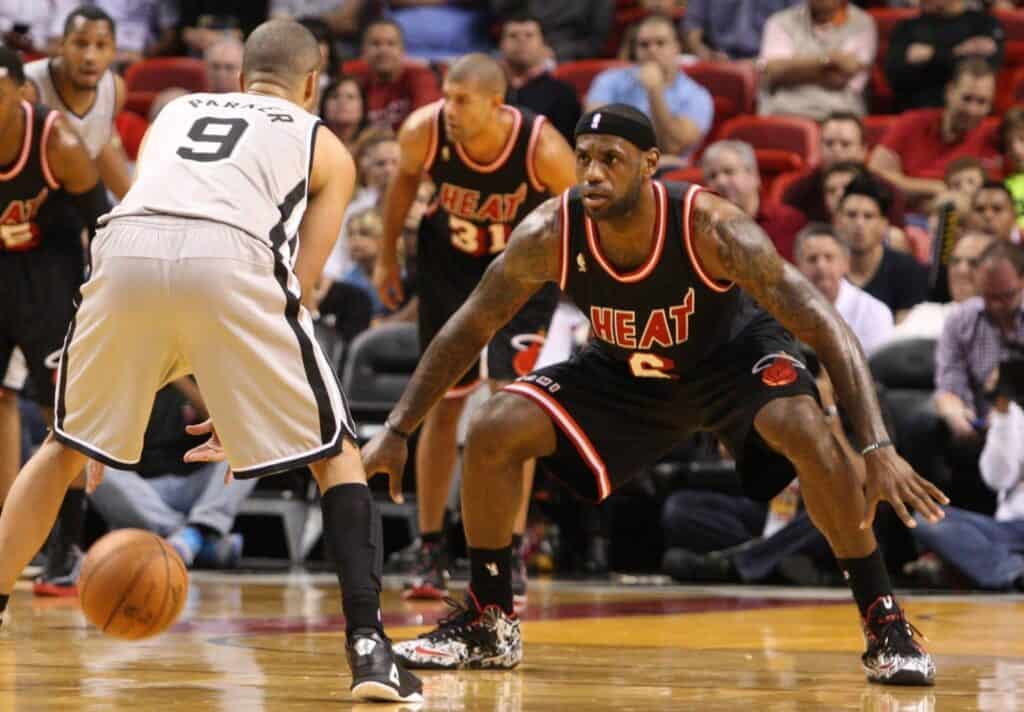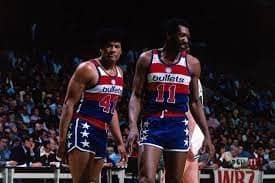Defensive efficiency is a metric for understanding how efficient team defenses are in the NBA, based on points allowed per 100 possessions. Because the number of defensive possessions a team faces varies across the league, setting the pace at 100 possessions allows for a better comparison of defenses. The metric is referred to as Defensive Rating; teams with a lower defensive rating are more efficient at restricting points allowed, while teams with a higher defensive rating are less efficient at restricting points allowed. The NBA has been tracking defensive efficiency since the 1973-1974 NBA season.

How does measuring defensive efficiency make a difference?
Teams have different defensive schemes to minimize the number of points the other team scores. This could be through an emphasis on takeaways (blocks and steals), forcing low-quality shots (contested shots or other difficult shots), and other schemes. Because of that, the pace of the defenses (and likewise the offense) are different, meaning that the number of total possessions can differ.
Because the number of possessions differs, teams may technically play less or more defense than other teams. It would therefore be unfair to try and compare teams solely on the number of points allowed. The defensive rating metric allows for a fair comparison of defensive efficiencies by adjusting possessions to 100 possessions.
The defensive efficiency formula is simple: the number of points allowed per game divided by the number of defensive possessions per game, multiplied by 100.
Here’s a straightforward example, without using the defensive rating formula. A team allows 110 points on 100 possessions, while another team allows 105 points on 100 possessions. It is easy to say that the first team has a less efficient defense than the second team, because they allow more points on the same number of possessions.
The defensive rating formula helps when the number of possessions are different. In this example, one team allows 107 points on 93 possessions, while another team allows 104 points on 88 possessions. After calculating for defensive efficiency, the first team allows 115.05 points per 100 possessions (defensive rating = 115.05), while the second team allows 118.18 points per 100 possessions (defensive rating = 118.18). Therefore, the first team is more defensively efficient than the second team, as they allow less points in the same number of possessions.
What is the best (lowest) defensive rating allowed by an NBA team?
The 1974-75 Washington Bullets have the best defensive rating ever in NBA history since the stat was recorded. The Bullets had a 91.3 defensive rating, meaning per 100 possessions, they only allowed 91.3 points. The 1974-75 Washington Bullets were able to boast such a strong defensive rating due to having two Hall of Fame centers in Wes Unseld and Elvin Hayes. Both centers were excellent rebounders, especially on the defensive end, which allowed them to limit offensive rebounds and 2nd-chance points. The Bullets only allowed 97.5 points per game, the 2nd-best record in the league. The team averaged 5.0 blocks a game (3rd best that season) and 11.3 steals a game (2nd-best in the league), and their opponents turned the ball over 22.5 times a game (2nd-best in the league).

The 1974-75 Bullets had an elite defense and a very good offense that allowed them to an excellent 60-22 record, enough for a 2nd seed in the Eastern Conference. The Bullets made their way all the way to the NBA Finals but sadly succumbed to the Golden State Warriors. One small victory is that no team has broken the Bullets’ nearly 50-year record of having the best defensive rating in NBA history; the 2nd-best defensive rating ever (93.6) record is a considerable 2.3 points away.
It is important to note that defensive rating was only recorded by the NBA starting from the 1973-74 NBA season. The NBA prior to this era was even more defense-oriented, with many vaunted defenses including Boston Celtics teams from the 1960s that were led by Bill Russell. While not an official/recognized statistic, the 1964-1965 Boston Celtics had an astounding 83.8 defensive rating, which would be the clear best-ever defensive rating had the NBA recorded the statistic during that time.
What is offensive efficiency in the NBA?
Much like defensive efficiency, offensive efficiency in the NBA is an important component of any coach’s game plan. Offensive efficiency may be even more observable to the average fan, who can tell when shots are falling and when they aren’t. Points scored may be a sign of an offense’s strength but not quite of its efficiency. The formula for determining offensive efficiency, known as offensive rating, is points scored per game divided by possessions per game; that then is multiplied by 100. The higher the offensive rating, the more efficient a team’s offense is (more points scored in the same number of possessions).
Offensive efficiency has seen an explosion in the last 5 years or so, as the NBA has seen a revolution towards relying on 3-point shots. Naturally, if a team scores 3 points rather than 2 points in a possession, they will score more points per possession, which increases their offensive efficiency. For example, 7 teams had an offensive rating of 117 or more in the 2020-21 NBA season; they currently hold the top 7 spots for best ever offensive ratings in NBA history.
Defensively efficient teams may not be as fun to watch as an offensively efficient team, but they are well-placed to take a team deep into the postseason. And next time you think your team is boring, just check the defensive rating; its most likely to put you at ease.
Note: all stats pulled from StatMuse and Basketball-Reference
